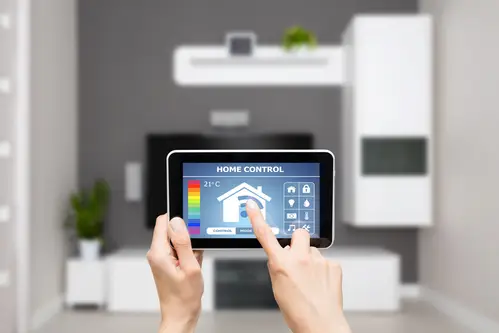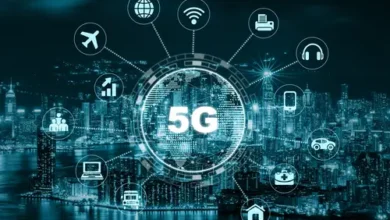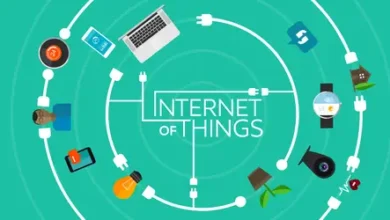Smart Homes, Smarter Living: How To Use Technology

Step into the world of modern living, where your home is not just a structure to live in, but an intelligent companion that enhances your lifestyle. Welcome to our latest post titled “Smart Homes, Smarter Living: How to Use Technology for Convenience and Efficiency.” This article will open a window into the fascinating realm of smart homes – residences equipped with advanced automation systems designed for easy control over different aspects of your home life.
From lighting and temperature regulation to security features or even appliance operation – everything can be managed efficiently at the tap of a button! The aim? To make everyday tasks simpler while saving valuable time and energy resources. So whether you’re tech-savvy and seeking futuristic solutions or someone who values convenience above all else; join us as we delve into how technology can transform ordinary houses into efficient, secure, convenient havens that cater specifically to their owners’ needs.
Understanding the Concept of Smart Homes
Smart homes are revolutionizing daily life by seamlessly incorporating advanced technology into our routines. These homes are equipped with a network of interconnected devices that can be controlled remotely, providing convenience and efficiency. From smart thermostats that adjust the temperature based on your preferences to smart security systems that monitor your home, the possibilities are endless. By utilizing sensors, cameras, and artificial intelligence, smart homes can anticipate our needs and enhance our quality of life. With the ability to automate tasks and optimize energy usage, smart homes offer a modern and sustainable living solution that simplifies and enhances daily routines.
The Role of Artificial Intelligence in Home Automation
Artificial Intelligence (AI) plays a crucial role in the advancement of home automation, transforming traditional homes into smart, efficient living spaces. AI technologies enable devices and systems within the home to learn and adapt to the habits and preferences of the occupants. This enhances convenience and efficiency. Through machine learning algorithms, AI-powered smart home devices can analyze data and make intelligent decisions to automate various tasks. For instance adjusting lighting, controlling temperature, and managing security systems.
One of the key benefits of AI in home automation is its ability to create personalized experiences for users. By understanding patterns in behavior and preferences, AI-powered systems can anticipate the needs of occupants and proactively adjust settings to enhance comfort and convenience. For example, smart thermostats equipped with AI technology can learn the temperature preferences of users. They can then automatically adjust settings to optimize energy efficiency while maintaining a comfortable environment. Moreover, AI-driven home automation systems can enhance security by continuously monitoring activities within the home and alerting users to any unusual behavior or potential security risks. Through the integration of sensors, cameras, and smart locks, AI can provide real-time insights and enable remote monitoring and control for added peace of mind.
Benefits of Using Technology for Increased Convenience and Smarter Living
In today’s fast-paced world, technology has become an indispensable tool for increasing convenience in our daily lives. One of the key benefits of using technology is the ability to automate tasks and routines. This saves time and effort for individuals. Smart home devices such as thermostats, lighting systems, and security cameras can be controlled remotely through mobile apps. It allows users to adjust settings and monitor their homes from anywhere. This level of convenience not only enhances the comfort of living spaces but also improves security and energy efficiency.
Another advantage of integrating technology into our homes is the ability to streamline everyday processes. For example, smart appliances like refrigerators and washing machines can be programmed to notify users when supplies are running low or when a cycle is complete. This not only reduces the need for manual oversight but also ensures that tasks are completed efficiently and on time. Additionally, voice-controlled assistants like Amazon’s Alexa or Google Assistant make it easy to access information, set reminders, and control devices hands-free, further enhancing convenience for users.
Overall, the incorporation of technology in our homes offers a wide range of benefits that contribute to a more convenient and efficient lifestyle. By embracing smart devices and automation tools, individuals can enjoy a higher level of comfort, control, and productivity in their daily routines. The convenience provided by technology not only simplifies tasks but also allows for more time to focus on other important aspects of life. This ultimately leads to a better quality of living for individuals and families alike.
Increasing Efficiency with Smart Devices for Smarter Living
The integration of smart devices into homes has revolutionized the way we live, offering unparalleled convenience and efficiency. One of the key benefits of smart devices is their ability to increase efficiency in various aspects of daily life. From automated lighting systems that adjust based on the time of day and occupancy, to smart thermostats that learn your preferences and optimize energy usage. These devices are designed to streamline tasks and minimize waste. For example, smart thermostats can regulate the temperature in your home based on your schedule. This ensures energy is not wasted when no one is home. This not only saves money on utility bills but also reduces your carbon footprint by using resources more intelligently.
Moreover, smart devices can help track and monitor energy consumption, providing valuable insights to make informed decisions about power usage. By analyzing data collected from these devices, homeowners can identify patterns and trends in their energy consumption. This allows them to make adjustments for greater efficiency. Additionally, smart devices can be controlled remotely through smartphone apps. This gives users the flexibility to manage their home environment even when they are away.
Applying Smart Technologies: Practical Examples & Future Prospects
Smart technologies have revolutionized the way we interact with our homes, offering numerous practical applications and promising future prospects. From smart thermostats that learn our heating and cooling preferences to automated lighting systems that adjust to our daily routines. These technologies enhance convenience and efficiency in our daily lives. Furthermore, the integration of smart security systems, such as smart cameras and sensors, provides us with peace of mind and enhanced safety measures. Looking ahead, the future prospects of smart technologies in homes are vast. It has the potential for increased connectivity and automation through the use of artificial intelligence and internet-of-things devices.





